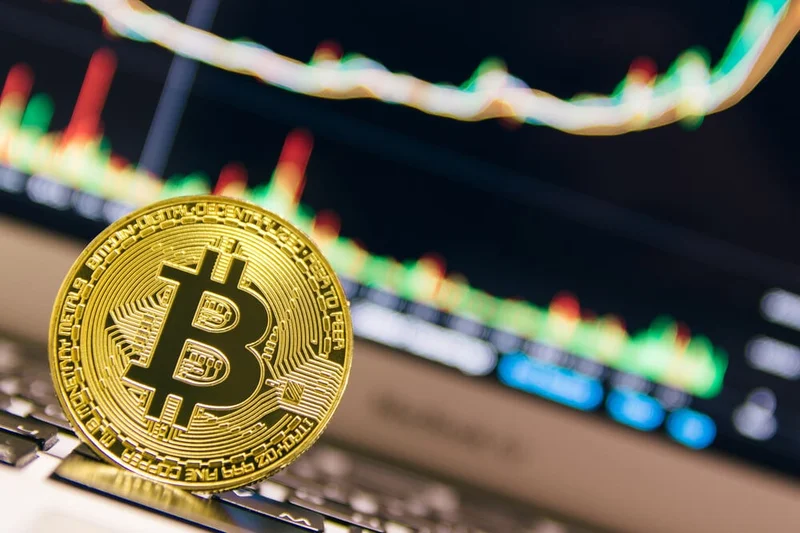It happened in the quiet hum of the early morning, just after midnight. A flicker on a million screens across the globe. For a brief, breathtaking moment, the price of a single Bitcoin wicked up past $125,700. It wasn't just a number; it was a signal. A flare sent up from the digital frontier, finally seen and acknowledged by the old world of finance.
For years, we’ve talked about Bitcoin in terms of potential, of what it could be. We’ve debated its merits, endured the cynical headlines, and watched as it was dismissed as a fringe asset for cypherpunks and speculators. But that’s over. What we’re witnessing now isn’t just another bull run. This is different. This is the great convergence, the moment the institutional floodgates didn’t just open—they were blown off their hinges. The current bitcoin price today isn't a bubble; it's a recalibration of value for the digital age.
The Institutional Embrace
Let’s be clear about what’s driving this. For the longest time, the worlds of traditional finance and decentralized digital assets were like two continents separated by a vast, turbulent ocean. You could shout across the water, but you couldn't easily move value between them. The spot Bitcoin ETFs, particularly BlackRock’s IBIT, changed everything. They aren't just investment products; they are the first great bridges built across that ocean.
When I saw the news that IBIT had rocketed into the top 20 U.S. ETFs by assets, crossing $90 billion faster than any ETF in history, I honestly just sat back in my chair, speechless. The speed of this is just staggering—it means the gap between the old financial world and the new digital one is closing faster than we can even comprehend, and it’s pulling trillions of dollars of capital along with it. This isn't a niche asset anymore. This is the bedrock of a new financial layer being integrated into the global system.
This structural shift is happening alongside a classic macro tailwind: the Federal Reserve is cutting interest rates. Every time the Fed makes holding dollars less attractive, it inadvertently puts a spotlight on assets with provable scarcity. It’s a simple equation. As the supply of fiat currency expands, the demand for assets with a fixed supply, like Bitcoin or even the traditional gold price, naturally increases. We’re seeing investors play the "debasement trade," and Bitcoin is becoming their vehicle of choice. But this time, it’s not just retail investors; it’s the biggest money managers on the planet.

What happens to a decentralized network when the most powerful financial institutions in the world are no longer just observing it, but actively becoming some of its largest stakeholders? Does this validation come at a cost to its core ethos, or does it simply legitimize it on a scale we never thought possible?
The Road to $200,000
With the bridges built and the economic winds at our back, the question is no longer if Bitcoin will continue to rise, but how far and how fast. Wall Street, once the staunchest of critics, is now in a race to put out the most bullish price targets. JPMorgan is eyeing $165,000. VanEck sees $180,000. And Standard Chartered has planted its flag at a staggering $200,000 by the end of the year.
JPMorgan’s analysis is particularly fascinating. They argue Bitcoin is still undervalued compared to gold when you adjust for volatility. Essentially, this means that for the amount of risk you take on, Bitcoin has more room to grow to match gold’s massive private holdings—in simpler terms, they're saying that pound for pound, Bitcoin's engine is more powerful and has the potential to cover a lot more ground before it's fairly valued against its analog counterpart. This is the kind of sophisticated, nuanced thinking that was completely absent from mainstream financial analysis just a few years ago.
This isn’t just speculation. It’s backed by the fundamental mechanics of the network itself. VanEck points to the post-halving cycle dynamics, a phenomenon we’ve seen play out with almost mathematical predictability. The halving in April 2024 cut the new supply of Bitcoin in half, creating a supply shock. Now, with the ETFs generating massive, relentless demand, we’re seeing a classic economic squeeze. It’s like a river being fed by a new, enormous tributary while its channel is simultaneously narrowing. The water level has to rise.
We have a responsibility here. As this new digital economy matures and creates unprecedented wealth, we have to think about what kind of system we’re building. Is it one that fosters innovation, empowers individuals, and creates a more transparent financial world? Or does it just replicate the power structures of the old one? The code is neutral, but its application is deeply human. This is the kind of breakthrough that reminds me why I got into this field in the first place—the chance to build something better.
The Great Recalibration Has Begun
Forget the daily charts and the breathless headlines for a moment. What we are witnessing is a fundamental, tectonic shift in the global financial landscape. The bitcoin stock price—or rather, the price of the asset itself—is merely the Richter scale measuring an earthquake happening deep beneath the surface. This is no longer about a speculative bet. It’s about the formal, systematic integration of a decentralized, digital store of value into the heart of the legacy financial system. The price targets of $165,000 or $200,000 aren't the destination; they are just mile markers on a much longer journey. The digital bedrock is now set, and the world is starting to build upon it.
